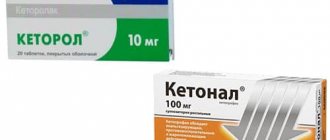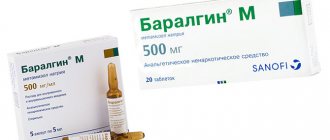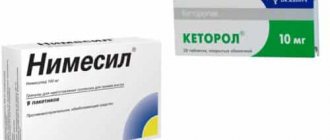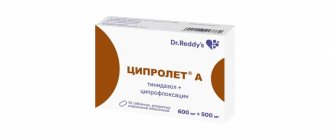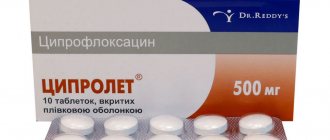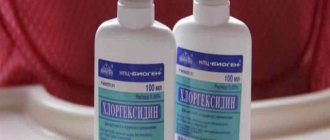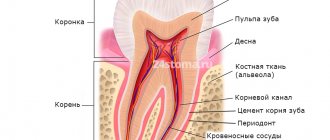About Tsifran
Tsifran is a drug whose pharmacological effect is aimed at stopping the ability of bacteria to reproduce freely.
Unlike other drugs, over time, Cifran promotes the death of pathogenic particles that have entered the body. In most cases, the use of Tsifran is associated with:
- Diseases of joints and bones. The differences between this drug and other drugs are associated with the presence of substances in it that help stop the progression of arthritis or osteomyelitis in the body. This is one of the few important properties of Cifran.
- Gynecological diseases. Tsifran easily copes with many diseases of a gynecological nature. For example, this medicine is indispensable for inflammatory processes in the pelvis, as well as in cases of damage to the body by endometritis.
- Skin pathologies. The difference between Tsifran lies in its widespread use for various skin diseases. For example, its active components help heal burns with infected wounds, as well as numerous abscesses with ulcers.
- ENT diseases. In good health and the absence of allergic manifestations, Cifran is used to eliminate sinusitis, as well as inflammatory processes in the middle ear.
- Diseases in the urinary system. One use of Tsifran allows you to rid the body of painful manifestations of urethritis, inflammatory processes in the bladder, manifestations of prostatitis and pyelonephritis.
The dosage of Cifran is prescribed to each patient individually by the doctor, taking into account the following criteria:
- state of renal activity;
- weight indicators;
- the degree of damage to the body by the existing disease;
- patient's age.
The duration of the therapeutic course is also prescribed by the doctor. In most cases, it does not exceed seven calendar days. Self-medication with Cifran is very dangerous, since the compounds it contains can kill all beneficial intestinal bacteria, thereby causing dysbiosis and digestive disorders. Taking large doses at one time is also dangerous to health.
Possible side effects include:
- allergic manifestations;
- nervous disorders;
- Digestive problems.
If you experience all these phenomena, it is recommended to immediately consult a doctor, who, based on an examination of the body, will decide whether to continue the course of taking the medication or to discontinue it.
Contraindications to taking Tsifran are the individual nature of intolerance to Tsifran's medicinal compounds, as well as the patient's age exceeding sixty years of age. Cifran is also prohibited for use in the treatment of pregnant women, as well as when breastfeeding infants.
Regarding the compatibility of Cifran with other medications, you should consult a doctor. This drug should not be taken if the patient has previously taken a drug with a high content of iron or aluminum. In case of an overdose, nausea may occur, during which it is recommended to drink as much fluid as possible.
The shelf life of Tsifran does not exceed two years, after which it is recommended to dispose of it. You can purchase Cifran only if you have the appropriate prescription.
Tsiprolet: instructions for use
The drug is included in the group of fluoroquinolones. The active ingredient is ciprofloxacin. Available in tablets with a dosage of 250 and 500 mg, solution for infusion, eye drops.
Characterized by a wide range of effects. Has a bactericidal effect. The mechanism of action of the drug is based on inhibition of the DNA gyrase enzyme of bacterial agents. Against this background, DNA replication and the synthesis of cellular proteins are disrupted. The active component affects not only reproducing microbes, but also those that are at rest.
Ciprofloxacin has an adverse effect on gram-negative aerobes such as Escherichia, Salmonella, Shigella, Citrobacteria, Klebsiella, Enterobacteriaceae, Protea, and Morganella. Effectively copes with intracellular pathogens such as legionella, brucella, chlamydia, listeria.
The drug is active against gram-positive aerobes: staphylococci and streptococci.
The instructions for use indicate that the medication is prescribed for:
- respiratory tract damage;
- ENT infections;
- kidney and urinary tract diseases;
- infection of the genital organs;
- damage to the gastrointestinal tract;
- diseases of the gallbladder and biliary tract;
- pathologies of the skin, mucous membranes and soft tissue structures;
- infection of the musculoskeletal system;
- sepsis;
- peritonitis.
Used as a prophylactic agent in patients with reduced immunity.
Tsiprolet is prescribed for damage to the respiratory tract.
Tsifran: instructions for use
Antibacterial drug from the fluoroquinolone category. The active ingredient is ciprofloxacin. Available in tablets and solution.
Prevents the proliferation of gram-positive and gram-negative bacteria that are resistant to aminoglycosides, penicillins and cephalosporins. Quickly suppresses the development of infection and the inflammatory process.
The medicine is indicated for:
- cystic fibrosis;
- pneumonia;
- acute or chronic bronchitis;
- bronchiectasis;
- tonsillitis;
- otitis;
- sinusitis;
- pharyngitis;
- adnexitis;
- cystitis;
- pyelonephritis;
- endometritis;
- gonorrhea;
- chlamydia;
- abscess;
- cholera;
- typhoid fever;
- peritonitis;
- salmonellosis.
Cifran quickly helps with burns, septic arthritis, osteomyelitis, sepsis and infected ulcers.
Cifran is indicated for cystic fibrosis.
Tsiprolet and Tsifran: the same thing
Tsifran and Tsiprolet are considered structural analogues. They contain the same active ingredient – ciprofloxacin. They cope equally with gram-positive and gram-negative aerobic microorganisms. Prohibited for the treatment of pregnant and lactating women. Do not use if you are hypersensitive to the components of the medication. Contraindicated for patients with atherosclerotic changes in the brain, epileptic syndrome, and kidney pathologies.
During use, ciprofloxacin may lead to side symptoms. This process is accompanied by:
- decreased blood pressure, increased heart rate or arrhythmia;
- cholestatic jaundice;
- loss of appetite;
- diarrhea;
- nausea, pain in the epigastric region;
- anxiety, headache;
- fatigue and sleep disturbances;
- tinnitus, impaired color perception;
- hematuria, dysuria;
- interstitial nephritis.
In some cases, urticaria, drug fever, necrolysis, myalgia, arthralgia, and tendon ruptures are diagnosed.
The drugs are produced by pharmaceutical companies from India.
Comparison of side effects of Tsiprolet A and Tsifran ST
Side effects or adverse events are any adverse medical event that occurs in a subject after administration of a drug.
Tsiprolet A has more side effects than Tsifran ST. This implies that the frequency of their occurrence is low in Tsiprolet A, and low in Tsifran ST. Frequency of manifestation is an indicator of how many cases of an undesirable effect from treatment are possible and registered. The undesirable effect on the body, the strength of influence and the toxic effect of drugs are different: how quickly the body recovers after taking it and whether it recovers at all. When using Tsiprolet A, the body's ability to recover faster is higher than that of Tsifran ST.
The difference between Tsifran and Tsiprolet
One of the main differences is the release form and dosage. Tsifran is available in solution and tablets with a dose of 250, 500 and 1000 mg. Tsiprolet is sold not only in tablets and solution, but also in eye drops. But there is a dosage of 250 and 500 mg. Therefore, the first drug is more often prescribed when complications develop.
Another difference is the presence of active ingredients. Because of this, Tsifran exhibits a prolonged effect. Thanks to this effect, the medicine fights various pathogenic microorganisms in the respiratory tract and genitourinary system.
What to choose?
Patients are often interested in which drug to choose. Both medications come in the same forms: tablets, infusion solution and eye drops. They also have the same active ingredient and belong to the same pharmacological group. They have similar indications and have almost the same effect on microorganisms.
The only difference is the fact that the line of drugs includes Tsifran with additional components (Tsifran OD). It is capable of destroying any pathogenic microorganisms. Another difference is that Tsifran is allowed to be taken by children from 12 years of age, while Tsiprolet is prohibited up to 18 years of age. Another difference is the cost of the drugs. Tsifran is a cheaper drug compared to its analogue.
Having studied both drugs, we can conclude that the differences between them are insignificant . They have the same indications and contraindications. However, the patient should not self-medicate; the drug should be prescribed by a doctor. The choice is made based on the doctor’s recommendations, as well as the availability of the drug in the nearest pharmacies. Some doctors believe that Tsiprolet is more effective than its counterpart. This is due to the fact that the drug is produced by an Indian company. It is more thoroughly purified from mechanical impurities, which reduces the number of side effects.
Thus, both drugs are almost the same . It is impossible to say which drug is better. Treatment should be prescribed exclusively by a doctor, based on the characteristics of the patient’s disease. Any antibacterial drugs should be taken with caution, and violation of the dosage may result in the development of side effects.
Medicine and healthComment
Reviews
Gennady Andreevich, dental surgeon, 53 years old, Khabarovsk
Most often, patients come with a request to remove a diseased tooth. The cause of gum swelling is an inflammatory process that begins from the roots. To prevent the development of complications and speed up the healing process of the wound, I prescribe Tsiprolet. Inexpensive and effective drug. It has a minimum of contraindications and rarely causes side effects.
Dmitry Petrovich, therapist, 41 years old, Moscow
Against the background of damage to the respiratory tract, the infection often spreads to the eyes. This process is accompanied by tearing, itching, redness and accumulation of pus. In such cases, Tsiprolet eye drops help well. They are prescribed not only to adults, but also to children.
Svetlana, 50 years old, Sevastopol
Six months ago my teeth started hurting. I came to the dentist. In response to the voiced complaints, he said that the cause was a wisdom tooth. Its roots touch nearby tissues. Sent for deletion. After the procedure, the surgeon prescribed Cifran. He explained the purpose of the drug by saying that it would help avoid the appearance of edema and the development of complications. I took the medicine for a week. Everything went well.
Antonina, 21 years old, Tyumen
What is the difference between Tsifran and Tsiprolet?
Various pathogenic microflora can lead to the inflammatory process. Drugs that have a targeted effect on its elimination are Tsifran and Tsiprolet. To choose the right drug, the doctor must take into account all the characteristics of the drugs and the characteristics of the patient’s body.
Various pathogenic microflora can lead to the inflammatory process. Drugs that have a targeted effect on its elimination are Tsifran and Tsiprolet.
Which drug is more effective?
After comparing the drugs, we can conclude that the differences between Tsifran and Tsiprolet are insignificant. The main difference between the drugs is in the additional substances. The similarity of indications for use, as well as therapeutic effects, is due to the presence of the same active ingredient in the drugs - ciprofloxacin.
Tsifran, unlike its analogue Tsiprolet, has a long-acting drug in its product line (Tsifran OD). This medicine completely eliminates pathogenic bacteria in the genitourinary and respiratory systems.
Otherwise, the medications are quite similar and interchangeable. The choice in favor of one of the drugs is made based on the doctor’s recommendations and availability in pharmacies; the difference in price is insignificant.
Characteristics of drugs
To analyze the effectiveness of these drugs, you need to consider each of them separately.
Tsifran
Cifran belongs to the fluoroquinol group of antibiotics. It is used for infections accompanied by a characteristic inflammatory process. Its effect is due to the fact that it prevents the proliferation of pathogenic microorganisms and interferes with their active life. The main component of the drug is active against gram-positive and gram-negative bacteria that are insensitive to the effects of cephalosporins, penicillin and aminoglycosides.
This drug is indicated for the following pathologies:
- bone and joint diseases (sepsis, osteomyelitis, septic arthritis);
- eye infections (conjunctivitis, corneal ulcers, blepharitis);
- gynecological disorders (pelvic inflammatory disease, endometritis);
- skin diseases (burn infections, abscesses, ulcers);
- ENT diseases (tonsillitis, pharyngitis, sinusitis, sinusitis, inflammation of the middle ear);
- diseases of the urinary system (urolithiasis, pyelitis, pyelonephritis, prostatitis, gonorrhea, chlamydia);
- digestive disorders (salmonellosis, campylobacteriosis, shigellosis).
This remedy is also used to prevent complications after eye surgery.
Contraindications for use:
- individual intolerance to the components of the drug;
- pregnancy and lactation;
- age up to 18 years.
Caution must be exercised in the following cases:
- for kidney and liver diseases;
- for mental disorders;
- for epilepsy;
- with atherosclerosis of blood vessels;
- in case of cerebrovascular accident.
After treatment, adverse reactions occur infrequently. These include:
- Digestive disorders:
- decreased appetite;
- hepatitis;
- cholestatic jaundice;
- bloating;
- nausea;
- epigastric pain;
- flatulence;
- diarrhea;
- vomit.
- Nervous system disorders:
- dizziness;
- insomnia;
- tremor of the limbs;
- depression;
- hallucinations;
- migraine;
- fainting;
- increased sweating.
- Pathologies of the sense organs:
- diplopia;
- violation of taste buds;
- hearing impairment.
- Diseases of the genitourinary system:
- interstitial nephritis;
- hematuria;
- crystalluria;
- glomerulonephritis;
- kidney abnormalities;
- dysuria;
- polyuria.
The drug is available in the form of eye drops, solution for infusion and tablets. Manufacturer: Ranbaxy Laboratories Ltd., India.
Cifran should be taken with caution for kidney and liver diseases.
Tsiprolet
This drug is an antibiotic that belongs to the group of fluoroquinolones. When a bacteria penetrates into a cell, the active substance of the drug prevents the formation of enzymes that promote the proliferation of infectious agents. Doctors often prescribe this medication to treat many diseases.
- E. coli;
- streptococci;
- staphylococci.
This drug is prescribed for the following pathologies:
- bronchitis;
- focal pneumonia;
- urinary system infections (kidney inflammation, cystitis);
- gynecological pathologies;
- abscesses;
- mastitis;
- carbuncles;
- phlegmon;
- boils with suppuration;
- prostate diseases;
- ENT infections;
- peritonitis;
- abscess;
- hydronephrosis;
- bone and joint infections;
- eye diseases.
This drug is also prescribed in the postoperative period for cholecystitis, pancreatitis and to prevent the occurrence of purulent formations.
Contraindications for use:
- deficiency of glucose-6-phosphate dehydrogenase;
- pregnancy and breastfeeding;
- pseudomembranous colitis;
- age under 18 years;
- liver diseases.
Caution should be exercised when taking Tsiprolet in the following cases:
- in the presence of mental disorders;
- in case of cerebrovascular accident;
- with convulsions;
- with atherosclerosis of cerebral vessels;
- with diabetes mellitus.
Tsiprolet is prescribed in the postoperative period for cholecystitis, pancreatitis and to prevent the occurrence of purulent formations.
Tsiprolet
An antimicrobial drug belonging to the group of fluoroquinolones . The active ingredient is ciprofloxacin hydrochloride . When taken orally, it is quickly absorbed from the gastrointestinal tract. Bioavailability is 50-85%. The maximum concentration is observed in the blood after 1.5 hours. Also, the active substance is distributed throughout the body, entering all tissues and fluids.
The main route of elimination is the kidneys. The half-life is 3-5 hours with normal renal function. With kidney disease, the time increases significantly. About 70% of the substance is excreted in urine, and the rest in feces.
Indications for use are:
- Respiratory tract diseases (bronchitis, pneumonia).
- Infections of the ENT organs (otitis media, sinusitis, sinusitis).
- Urogenital infections.
- Gallbladder infections.
- Skin infections (abscess, boil, carbuncle).
- Musculoskeletal infections.
- Sepsis.
- Hydronephrosis.
- Peritonitis.
It is also used for the prevention of diseases in people with reduced immunity, together with immunosuppressants.
Contraindications are:
- Individual intolerance to components.
- Pregnancy and lactation period.
- Pseudomembranous colitis.
- Liver diseases.
- Children under 18 years of age.
It is prescribed with caution to patients with mental illness, atherosclerosis and epilepsy.
The dosage is determined individually. The average daily dose is 250 mg , and the maximum is 500 mg . If kidney function is impaired, the dosage is reduced by 2 times.
The dosage for intravenous administration is determined by the attending physician depending on the disease.
Comparison of Tsifran and Tsiprolet
Despite the fact that the drugs have a similar effect, they have some differences.
Similarities
These products have the same release form (tablets, eye drops, injection solutions). In addition, they contain one active substance – ciprofloxacin. They have similar indications for use and the same effect on pathogenic microflora. Their effectiveness and contraindications for use differ insignificantly.
What is the difference
These drugs differ in the presence of additional components in their composition.
Tsifran has one of the varieties (Tsifran OD), which is characterized by prolonged exposure.
This medication eliminates all pathogens in the respiratory organs and genitourinary system.
Which is cheaper?
Tsifran is less expensive. Its average price is 45 rubles, and the cost of Tsiprolet is 100 rubles.
Conditions for dispensing from pharmacies
Both of these drugs are available strictly with a doctor's prescription.
Comparison of safety of Tsiprolet A and Tsifran ST
The safety of a drug includes many factors.
At the same time, in Tsifran ST it is higher than in Tsiprolet A. It is important where the drug is metabolized: medicinal substances are excreted from the body either unchanged or in the form of products of their biochemical transformations. Metabolism occurs spontaneously, but most often involves major organs such as the liver, kidneys, lungs, skin, brain and others. When assessing the metabolism of Tsifran ST, as well as Tsiprolet A, we look at which organ is the metabolizing organ and how critical the effect on it is.
The risk-benefit ratio is when the prescription of a drug is undesirable, but justified under certain conditions and circumstances, with the obligatory observance of caution in use. At the same time, Tsifran ST has fewer risks when used than Tsiprolet A.
Also, when calculating safety, it is taken into account whether only allergic reactions occur or possible dysfunction of the main organs. In other matters, as well as the reversibility of the consequences of using Tsifran ST and Tsiprolet A.
Which is better - Tsifran or Tsiprolet
The safest of these two products is Tsiprolet, since its composition does not contain specific, mechanical or technological impurities. Tsiprolet has fewer adverse reactions. When choosing between these two drugs, the attending physician takes into account the nature of the disorder and the characteristics of the patient’s body.
For STDs
These drugs can be used for sexually transmitted diseases, since they have an inhibitory effect on the causative agent of infections. In this case, the medicine should be prescribed by a doctor after analyzing the clinical picture.
Patients' opinions
Svetlana, 45 years old, Surgut
After the wisdom tooth was removed, soft tissue swelling occurred, which was accompanied by severe pain. The attending physician prescribed Cifran. I took it 1 tablet 2 times a day. On day 3, the swelling decreased significantly, and after a week it completely disappeared.
Natalya, 23 years old, Kazan
Not long ago I suffered from a sore throat. I gargled with a solution of baking soda and salt. This helped relieve the swelling, but not for long. After a short period of time, the symptoms returned. The doctor recommended Tsiprolet. The swelling became less after just 1 day, breathing became easier, and other unpleasant symptoms disappeared. By day 3, the swelling had completely disappeared.
Patient reviews
Marina, 35 years old, Moscow: “After the removal of a wisdom tooth, the soft tissues swelled.
This was accompanied by severe pain. The doctor prescribed Tsifran, which I took 2 times a day, 1 tablet. The swelling decreased on the third day, and completely disappeared on the seventh.” Yana, 19 years old, Vologda: “I recently got sick with a sore throat. I gargled with a soda-salt solution, which relieved swelling, but the effect was short-lived. After some time, the discomfort in the throat returned. The doctor recommended Tsiprolet. The swelling decreased the very next day, breathing became easier, and other symptoms also alleviated. After 2 days the swelling was completely gone.”
Reviews from doctors about Tsifran and Tsiprolet
Alexander, 47 years old, dentist, Krasnodar
I prescribe Tsiprolet to my patients for chronic periodontitis (inflammatory processes inside the tooth). This remedy has a small number of adverse reactions and contraindications, and rarely leads to allergies.
Valentin, 49 years old, infectious disease specialist, Vladivostok
Most often I prescribe the drug Tsiprolet in the presence of eye diseases of bacterial origin. It has a strong bactericidal effect and rarely leads to allergic reactions.
Nina, 36 years old, dermatovenerologist, Tver
Tsifran is a targeted antibiotic, which I often prescribe for the treatment of dermatological and venereal diseases. It helps destroy various pathogens. In addition, it has a small number of contraindications. But before use, you must carefully read the instructions for the drug, because if you have certain pathologies, you should not take it.
Comparison of addiction between Tsiprolet A and Tsifran ST
Like safety, addiction also involves many factors that must be considered when evaluating a drug.
So, the totality of the values of such parameters as “syndrome o” in Tsiprolet A is quite similar to the similar values in Tsifran ST. Withdrawal syndrome is a pathological condition that occurs after the cessation of intake of addictive or dependent substances into the body. And resistance is understood as initial immunity to a drug; in this it differs from addiction, when immunity to a drug develops over a certain period of time. The presence of resistance can only be stated if an attempt has been made to increase the dose of the drug to the maximum possible. At the same time, in Tsiprolet A the values of the “o syndrome” are quite small, however, the same as in Tsifran ST.
Tsifran and Tsiprolet, what is the difference
Pharmacological properties
The active component of the drugs, ciprofloxacin, exhibits antibacterial activity against a wide range of microorganisms:
- Escherichia coli and Pseudomonas aeruginosa;
- streptococci;
- staphylococci;
- gonococci;
- legionella;
- Neisseria and many others.
The mechanism of action is to stop the proliferation of bacteria by disrupting DNA synthesis, as well as the direct destruction of microbes associated with the destruction of their cell membrane.
Indications
- inflammation of the ENT organs: ears, paranasal sinuses;
- infectious diseases of the lungs and bronchi;
- inflammatory pathology of the genitourinary area, including gonorrhea;
- intestinal infections caused by pathogens sensitive to ciprofloxacin;
- peritonitis (inflammation of the peritoneum);
- inflammation of the eye and surrounding structures;
- sepsis (spread of the microbe throughout all organs and tissues through the blood);
- bacterial inflammation of the musculoskeletal system;
- skin infections;
- infectious processes in persons with immunodeficiency;
- prevention of infectious complications after surgical treatment, including in ophthalmology.
An additional indication for the use of Tsifran is the prevention and treatment of pulmonary anthrax.
Contraindications
- individual hypersensitivity to drugs;
- pregnancy and breastfeeding;
- age up to 5 years for tsifran and up to 18 years for tsiprolet.
Additional contraindications for Tsifran:
- simultaneous use of the muscle relaxant tizanidine;
- pseudomembranous colitis is an intestinal disease caused by the pathogen Clostridium difficile.
- general and local allergic manifestations;
- vomiting, nausea, appetite suppression;
- diarrhea, abdominal pain;
- yellowness of the skin and eyes;
- headaches, lack of coordination;
- convulsions;
- anxiety, hallucinations, overexcitation, sleep disorders;
- impaired perception of taste and smell;
- decreased sensitivity in the limbs;
- visual and auditory disorders;
- rapid heartbeat, fainting;
- feeling of heat throughout the body;
- tendon damage;
- decrease in blood cell concentration.
Release form and price
- tablets 0.25 g, 10 pcs. — 51 rub.;
- tab. 0.5 g, 10 pcs. — 84 rub.;
- Tsifran OD (extended tablets) 0.5 g, 10 pcs. - 202 rubles;
- Tsifran OD 1 g, 10 pcs. — 309 rub.;
- Tsifran ST (combined drug) 0.25+0.3 g, 10 pcs. — 315 rub.;
- Tsifran ST 0.5+0.6 g, 10 pcs. — 365 rub.
- tablets 0.25 g, 10 pcs. - 64 rubles;
- tab. 0.5 g, 10 pcs. — 117 rub.;
- 0.2% infusion solution, 100 ml, 1 bottle - 85 rubles;
- 0.3% eye drops, 5 ml - 64 rubles;
- ciprolet A (combined drug) 0.5+0.6 g, 10 pcs. — 231 rub.
Comparison of the effectiveness of Tsiprolet A and Tsifran ST
The effectiveness of Tsiprolet A is quite similar to Tsifran ST - this means that the ability of the drug substance to provide the maximum possible effect is similar.
For example, if the therapeutic effect of Tsiprolet A is more pronounced, then using Tsifran ST even in large doses will not achieve this effect.
Also, the speed of therapy - an indicator of the speed of therapeutic action - is approximately the same for Tsiprolet A and Tsifran ST. And bioavailability, that is, the amount of a drug reaching its site of action in the body, is similar. The higher the bioavailability, the less it will be lost during absorption and use by the body.
